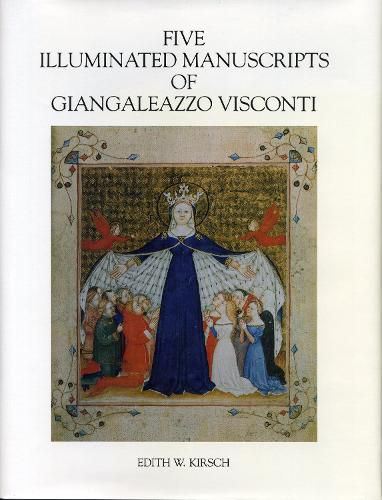Readings Newsletter
Become a Readings Member to make your shopping experience even easier.
Sign in or sign up for free!
You’re not far away from qualifying for FREE standard shipping within Australia
You’ve qualified for FREE standard shipping within Australia
The cart is loading…






This study attempts to reveal how a group of manuscripts commissioned by the Milanese Prince Giangaleazzo Visconti reflected not only his dynastic concerns but also the development of his inclination to express these concerns through works of art, establishing both his classical heroism and his Christian piety. Considered as a group for the first time, these manuscripts document one of Giangaleazzo’s most innovative activities as a manuscript collector - the commissioning of lavish manuscripts to commemorate major dynastic events. In their richness, the manuscripts document the self-image of an Italian prince who set out to record his accomplishments in unprecedented fashion. Giangaleazzo’s library rivalled even that of his brother-in-law, King Charles V of France, reputed to be the greatest collector of manuscripts in late 14th century Europe. Kirsch’s study rests on the premise that Giangaleazzo’s patronage of manuscripts was marked by certain characteristic features: execution of the work by gifted scribes and illuminators, the richness of both text and illumination, unusual combinations of texts, unusual conjunctions of text and image, and the iconographical manipulation of miniatures and borders to fit certain historical circumstances and to express particular devotions.
$9.00 standard shipping within Australia
FREE standard shipping within Australia for orders over $100.00
Express & International shipping calculated at checkout
This study attempts to reveal how a group of manuscripts commissioned by the Milanese Prince Giangaleazzo Visconti reflected not only his dynastic concerns but also the development of his inclination to express these concerns through works of art, establishing both his classical heroism and his Christian piety. Considered as a group for the first time, these manuscripts document one of Giangaleazzo’s most innovative activities as a manuscript collector - the commissioning of lavish manuscripts to commemorate major dynastic events. In their richness, the manuscripts document the self-image of an Italian prince who set out to record his accomplishments in unprecedented fashion. Giangaleazzo’s library rivalled even that of his brother-in-law, King Charles V of France, reputed to be the greatest collector of manuscripts in late 14th century Europe. Kirsch’s study rests on the premise that Giangaleazzo’s patronage of manuscripts was marked by certain characteristic features: execution of the work by gifted scribes and illuminators, the richness of both text and illumination, unusual combinations of texts, unusual conjunctions of text and image, and the iconographical manipulation of miniatures and borders to fit certain historical circumstances and to express particular devotions.